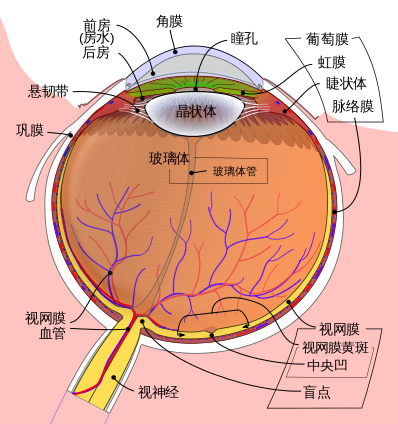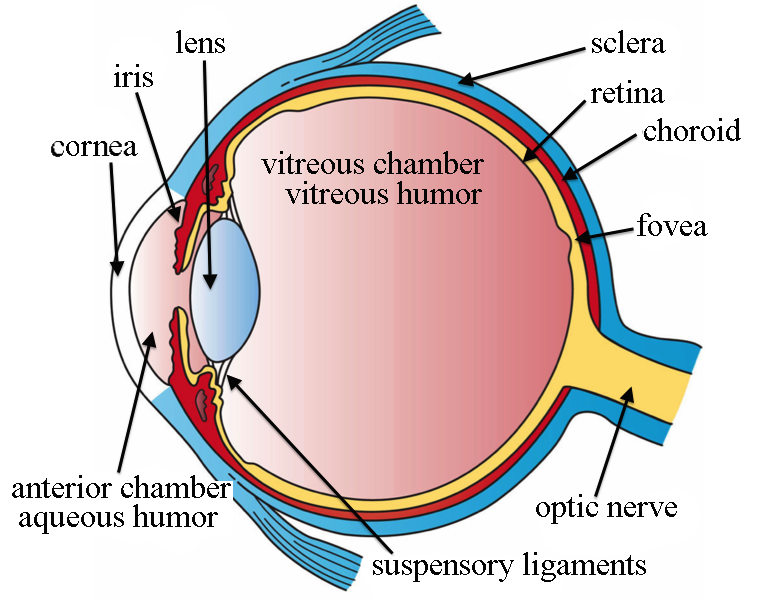說起眼睛之『光學模型』,焉能不提及亥姆霍茲
赫爾曼·馮·亥姆霍茲(Hermann von Helmholtz,1821年8月31日-1894年9月8日),德國物理學家、醫生。
生平
赫爾曼·馮·亥姆霍茲1821年出生於德國的波茨坦,父親為當地文法中學的教師。從小愛好自然科學,但為生活計,在柏林的醫學和外科研究所諗了醫科,由於該研究所的畢業生必須參加8年的兵役,亥姆霍茲1843年起在波茨坦擔任軍醫。1848年在亞歷山大·馮·洪堡的推薦下,提前結束兵役,開始了漫長的教學生涯,先是在柏林藝術學院教解剖學,1849年前往柯尼斯堡(時屬普魯士王國的東普魯士省,今為俄羅斯的加里寧格勒)擔任生理學和病理學教授,1855年接手波恩的解剖學和生理學教席,1858年轉去海德堡的生理學教席 ,1870年成為普魯士科學學會的會員。1871年亥姆霍茲任柏林大學物理學教授,1888年成為新成立的夏洛特堡帝國物理學工程研究所的第一任主席。
物理學研究
1847年,亥姆霍茲出版了《力量的保存》(Erhaltung der Kraft)一書,闡明了能量守恆的原理,亥姆霍茲自由能即以他來命名。他也研究過電磁學 ,他的研究預測了麥克斯韋方程組中的電磁輻射,相關的方程式以他來命名。
除了物理,亥姆霍茲也對感知的研究作出貢獻。他發明了檢眼鏡,以及以他命名的共鳴器(Helmholtz-Resonator),他兩部光學和聲學的著作,《作為樂理的生理學基礎的音調感受的研究》(Die Lehre von den Tonempfindungen als physiologische Grundlage für die Theorie der Musik)、《生理光學手冊》(Handbuch der Physiologischen Optik),對後世影響很大。
生理學研究
Helmholz是第一位將物理方法運用到神經傳導速度測量的人。1860年,他測量出神經傳導速率是90 m/s,然後他開始測量生物的反應速度,發現神經傳導到大腦後還要許久才會有反應,於是他推測,在感官資訊變成有意識的知覺之前,大腦必然在我們意識不到 的範圍裡先做了許多事去處理感官資訊,對神經訊號做評估、轉換、與重新導向。這就是認知心理學和認知神經科學中所稱「無意識認知歷程」的最初發現。[2]
《生理光學》巨著的呢!!難到百年前的論文,至今仍能有大用嗎 ??只講科學研究之風範、治學之嚴謹、敘述的條理分明、……就很值得一讀的了。感謝知識開放之潮流,可以有英文翻譯本閱讀的哩☆☆

Treatise on Physiological Optics
The Optical Society of America’s Southall (1924) translation of Hermann von Helmholtz’s Treatise on Physiological Optics (1910) is offered here for free download from the Graduate Center for Vision Research at the SUNY College of Optometry. The pages were originally scanned for Professor Benjamin Backus in 2001 by the University of Pennsylvania.
The page images in the PDF files are of excellent quality, but you may find they are too large to view using your web browser. We suggest you download them (e.g. right click and “save as”) and then view them on your computer. The smaller DjVu version may be more convenient: download the zip archive, extract it to a folder, and then open the file “directory.djvu” using a DjVu viewer.
The optical character recognition (OCR) in the DjVu and PDF files are useful for searching. Alas, the OCR is not of high quality and you may not find all instances of your target word(s). We would be delighted should you see fit to make and share a cleaner copy of the text.
Volume III begins with a discussion of perceptual inference. This is where most students of perception will want to start.
Happy reading!
The Backus Lab
September 2011
Helmholtz’s Treatise on Physiological Optics
Permission to use these files is granted for nonprofit purposes only.
Please see first page of the document for additional copyright information.
Volume I: Anatomy, physiology, and dioptrics of the eye; Gullstrand appendix
Zip archive of DjVu document (11 MB)
Adobe PDF with OCR text replacement (325 MB)
Adobe PDF images of pages (275 MB)
Volume II: Visual sensation (color, contrast, adaptation, etc.)
Zip archive of DjVu document (11.5 MB)
Adobe PDF with OCR text replacement (532 MB)
Adobe PDF images of pages (271 MB)
Volume III: Visual perception (depth, motion, etc.)
Zip archive of DjVu document (12 MB)
Adobe PDF with OCR text replacement (123 MB)
Adobe PDF images of pages (421 MB)
雖然此處眼睛之古典球面近似『模型參數』並非出自該巨著,實則道理相通,不過援引新『典型』數據而已。也許現今科技已經追求『個人化』之模型的了。


角膜→房水【前室】→虹膜【瞳孔】→晶狀體→玻璃體【後部】→視網膜
【角膜】 cornea
非球面
折射率︰1.376
前緣半徑︰ 7.8 mm
後緣半徑︰6.4 mm
厚度︰ 0.6 mm
【房水】 aqueous humor
折射率︰1.336
厚度︰3.0 mm
【瞳孔】 pupil
直徑變化︰ 1.5 mm ~ 8.0 mm
【晶狀體】 crystalline lens
折射率︰梯度, 1.386 ~ 1.406
前緣半徑︰10.1 mm
後緣半徑︰6.1 mm
厚度︰4.0 mm
【玻璃體】 vitreous humor
厚度︰16.9 mm
